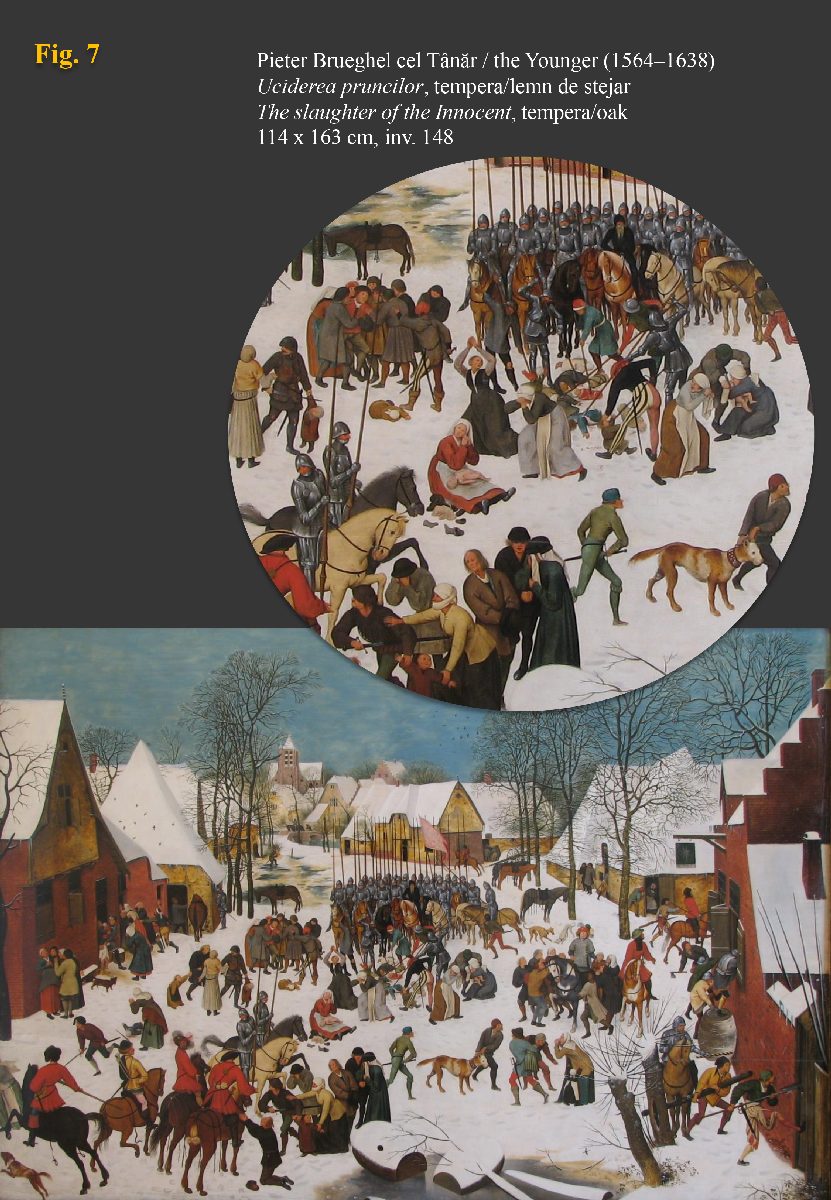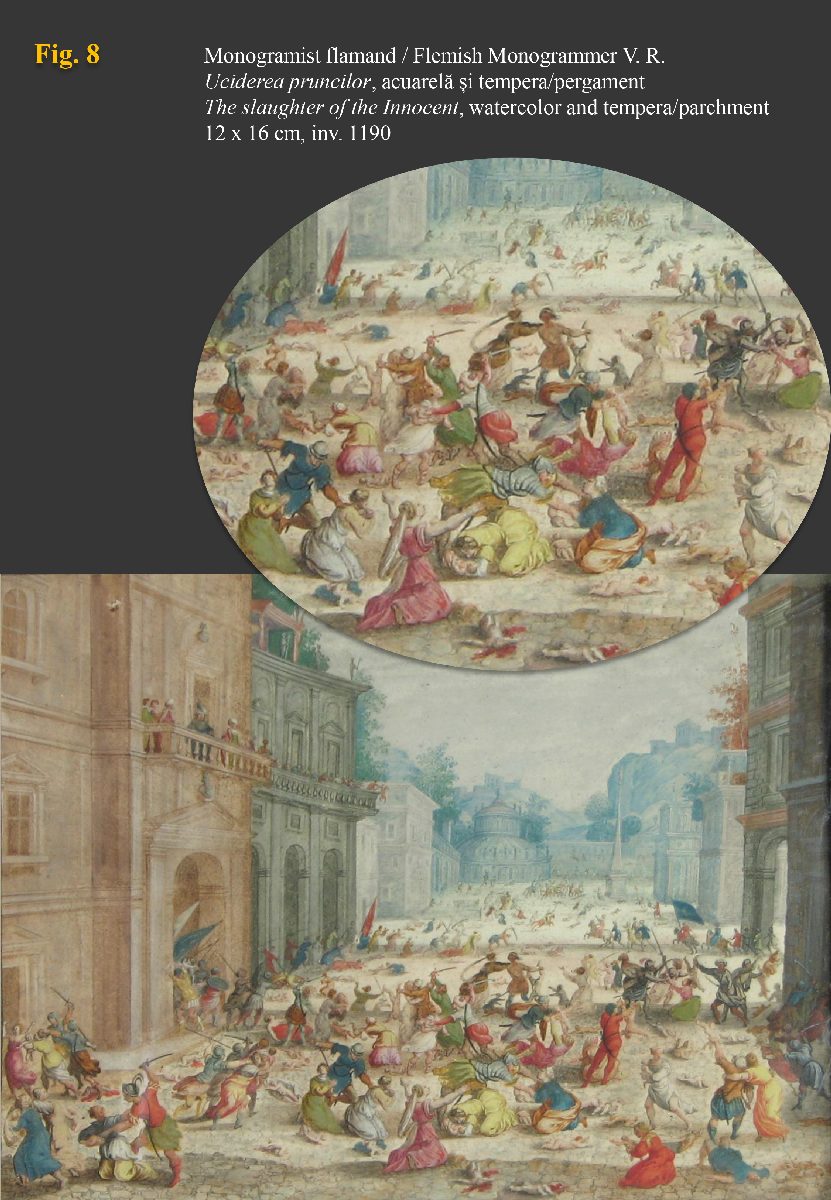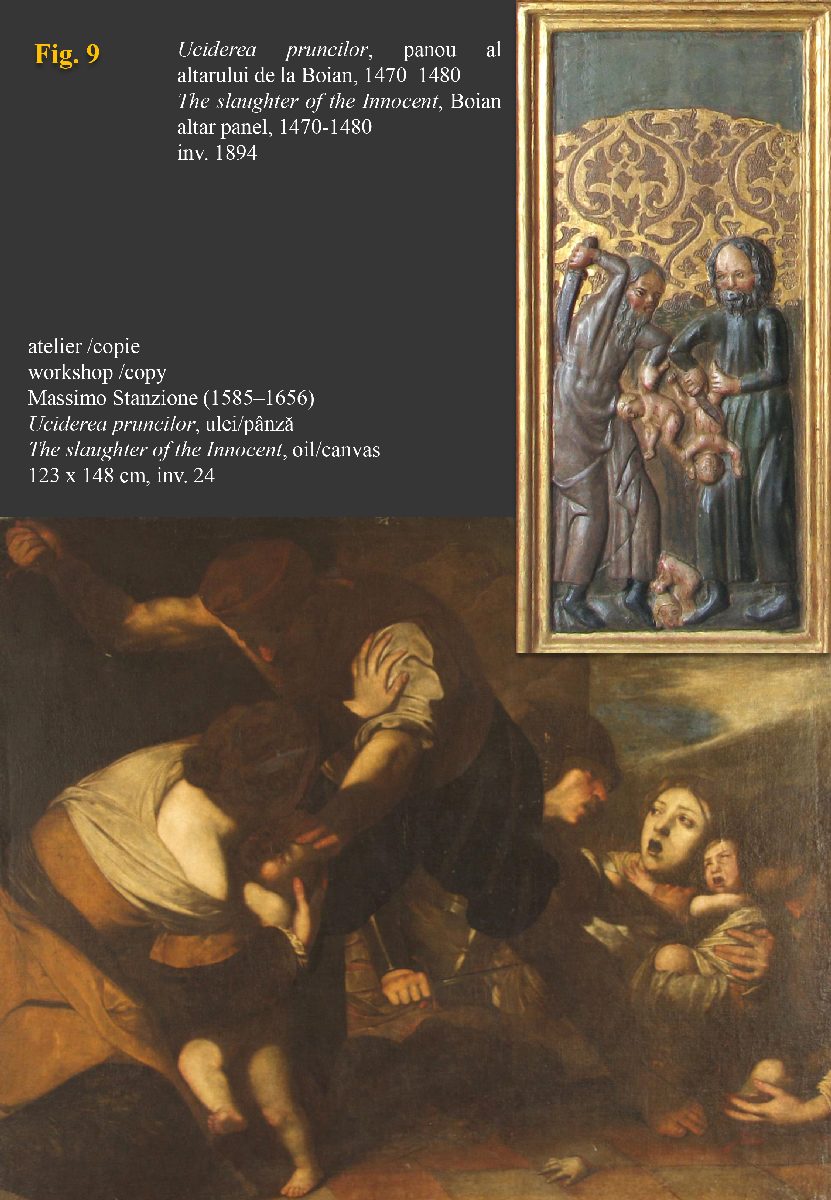Part 4: Martyrdom and the forerunners of martyrs
From the first converts to the missionaries, martyrs are believers who voluntarily chose to preserve their religion in exchange for giving up their own lives, emulating the model of Christ’s sacrifice. In terms of representation, like the heroic deceased in ancient cults, martyrs take on some of the traditional attributes of victorious athletes and soldiers (such as palm branches and laurel wreaths), along with the instruments of martyrdom (weapons and tools) comparable to weapons captured from enemies, deposited in the trophies raised by the victors. Since ancient times, the power of intercession is associated with the presence of their relics in places of worship.
Among the forerunners of Christian martyrs are the infants killed in Bethlehem. The Catholic Church considers as holy martyrs the babies aged up to 2 years, from the Bethlehem and its surroundings, killed by the order of King Herod the Great (Matthew, 2:16-18). From a very early period, a holiday that follows Christmas was dedicated to them, the theme being found in four of the museum's paintings, with a specific devotio moderna approach, reflecting scenes of robbery or armed abuses from the painter's contemporaneous times. The slaughter of the Innocent (Fig. 7), by Pieter Brueghel the Younger (1564–1638), can be considered a political allegory, reflecting the reprisals of Spanish troops during the Eighty Years' War.
A closer analysis also reveals various tactics used in such operations: removing barricades, blocking access to the locality, using tracking and attack dogs, different ways to force entry into homes. The work with the same title by the Flemish monogrammer V. R (Fig. 8), is, according to Valentin Mureșan, a pictorialization of an etching by Jacques Callot (ca. 1592–1635), dated 1618. Other variants (Fig. 9) of the theme are to be seen in one of the panels of the altar from Boian, dated 1470–1480 and in a work made by Massimo Stanzione (1585–1656), about which A. Sonoc considers more likely to be a workshop product or a copy after other work by the artist, dated ca. 1625–1650, in the Harrach family collection from Rohrau Castle (oil on canvas, 127 x 153 cm, inv. no. W. F. 354).
Click an image below to open it




